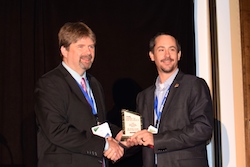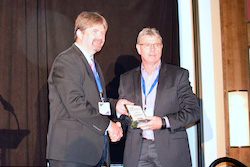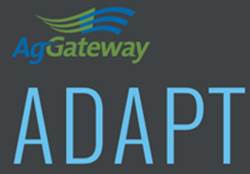 If InfoAg had an unofficial theme, it was connectivity, and nowhere was that more important than the AgGateway booth. Susan Ruland, Communications Director for AgGateway shared with me about the organization whose sole mission is the collaboration between agribusiness companies. Finding common standards to connect across the food industry has been a goal of theirs for years, anything from sales reporting standards to inter operability between equipment colors. Last week, after years of work, the organization was pleased to announce the finalization of ADAPT.
If InfoAg had an unofficial theme, it was connectivity, and nowhere was that more important than the AgGateway booth. Susan Ruland, Communications Director for AgGateway shared with me about the organization whose sole mission is the collaboration between agribusiness companies. Finding common standards to connect across the food industry has been a goal of theirs for years, anything from sales reporting standards to inter operability between equipment colors. Last week, after years of work, the organization was pleased to announce the finalization of ADAPT.
“The most exciting thing this year is the release of ADAPT,” Ruland told me. “ADAPT is a tool kit that that can be used by software manufacturers, OEMs, to make it possible for the grower to draw on data from different areas and not have it be a big headache, basically. […] Inter-operatbilibty is a huge issue and we are now- thanks to AgGateway, thanks to the hard work of the teams at AgGateway- we are cracking that nut and we’re getting to the grower being able to use their data more easily.”
Ruland also encourages anyone involved in precision agriculture to be part of AgGateway. The organization offers a “safe space,” she says, so anyone can offer an idea and be part of the discussion, and more importantly, part of the solution.
Listen to my full interview here: AgGateway, Susan Ruland
















